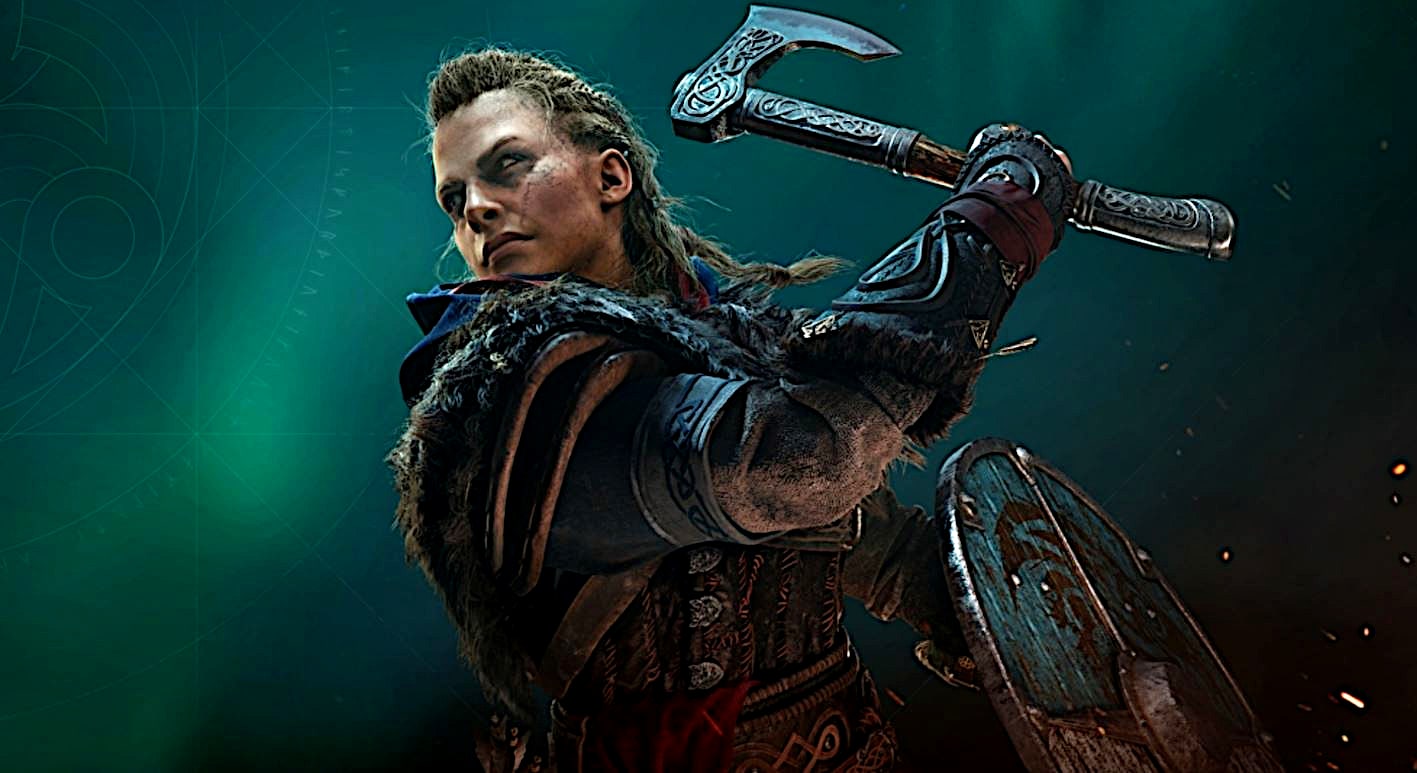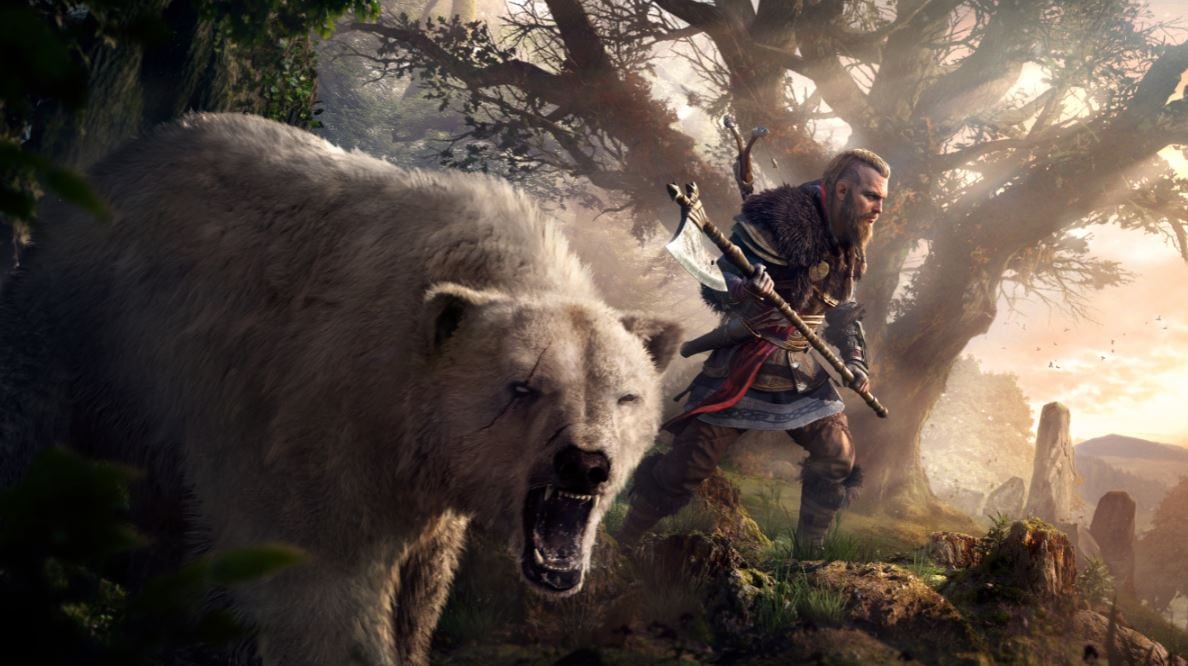
Assassin’s Creed’s Eivor offers rich insight into gender and sexuality in Nordic times
Ubisoft had a rocky end to the 2010s, to be blunt. With the studio’s management coming under fire after allegations of sexual misconduct, and the backlash faced from gamers after Assassin’s Creed: Odyssey’s DLC forced the player-character Alexios or Kassandra into a straight relationship (which they subsequently patched out, as games are wont to do), the excitement around Assassin’s Creed: Valhalla was something I took with a pinch of salt. I haven’t spent much time on the franchise since Assassin’s Creed: Black Flag, and since that time I’ve come to realise how little time the franchise gives to its women and how sexuality and gender are rarely, if ever, mentioned or confronted. After being gifted the game by a friend and former colleague, I decided to give it a shot – and the first five minutes caught my attention.
My interest in this game was one, single hook: that you played as a single character, Eivor Wolf-Kissed, and you could allow Eivor’s gender to be defined by the Animus rather than choosing it yourself. Essentially, you were letting the developers choose what gender you play as throughout your experiences. From this, I decided to do what the pandemic is denying all of us, and date everyone – well, okay, they’re fictional characters, but hear me out – and explore just how they navigate their choices of Eivor’s gender, with the variety of potential relationships found in-game. Does this make all of the NPC romances ones where they’re just “playersexual”? Yes, but it also uses that trope, and breaks it, through exploring the Viking societies in which the game takes part in.
From here on in, we’re speeding headlong into spoiler territory, and I’m only warning you out of kindness, so here we go:
Throughout the course of the game, you can pursue a relationship. Some of these are casual flings, such as the Norse warrior Broder, or the Flyting legend Stigr the Amorous. Others, such as the archer Petra, or the baker Tarben, can become permanent relationships. You can also pursue a relationship with Randvi, the wife of your adoptive brother Sigurd, which naturally can make things nice and difficult with Sigurd as the story progresses.
The option to choose Eivor’s gender is, of course, important, as rather than picking one of two individuals, you’ve got one person. Their gender is ambiguous whichever Eivor you choose due to both game and plot design – you can change Eivor’s gender on the fly through the options menu, as the Animus’ stream requires you to choose a single depiction of the Wolf-Kissed to continue. This means that, should you enter a relationship with a character, you can literally change the perceived gender of Eivor in the options menu, and nobody bats an eyelid. It’s a strange twist on the “playersexual” trope, when your character’s gender is completely free to the player’s choosing at any given point.

With all of these in mind, it’s worth noting that throughout the main story, the “Animus choice” is that Eivor Wolf-Kissed, in their conquest of England, is a woman. In this way, it could be seen that while you’re able to make your own choice as to your own character, the Animus – and therefore the devs – have given you the option to pursue many relationships with women, as a woman. In contrast, within the dream-world of Asgard when you let the Animus decide your gender, Eivor takes the form of a man, and you can pursue a romance with the ever-calculating Gunlodr, a character who, as it turns out, is very important to wider Assassin’s Creed lore.
Eivor becomes a transmutable form, which I consider fully intentional. Eivor describes their dreams in Asgard, seeing the world through the eyes of Havi, as being in another body, as seeing through someone else’s eyes and yet it is their words and movement. This is relevant to the plot, but that spoiler is one too many for today. In allowing the Animus to decide their gender, Eivor becomes a canvas from which gender can be seen from Ubisoft’s canon. When the player can choose between this, and seeing Eivor as explicitly a man or woman, at any given point in time, the canonicity matters less, and the body of Eivor is not immutable – the player and the game both have agency over this decision.
Of course, with a culture that no longer exists, it is difficult to understand the role of gender and sexuality in a culture. Similar to many cultures, information on relationships between women is scarce, but it is known that relationships focused on the dominant and submissive in sexual relationships, rather than our modern understandings of sexuality.
While in modern times, the images of viking men is hypermasculine to the point of satire, many burial sites indicated a permeability within defined genders and roles – many bodies identified as male were buried with clothing identified as feminine, and even the legendary burial site in Birka, Sweden, of a warrior with armour, weapons, and two riding horses, has been genomically confirmed to have XX chromosomes, and is not explicitly male as previously identified. Burials indicated that no role was denied to women – or, in fact, men, with noblewomen and chieftains found amongst ship burials, women buried with weapons alongside men who were not buried with them, and masculine bodies buried with feminine jewellery and clothing.

The Norse religion depicted an understanding of transgressing traditional forms and roles. Loki, the son of a Jotunn and a God, famously transformed into a mare in one of his schemes to distract a stallion, becoming pregnant with the future steed of Odin, the eight-legged horse Sleipnir. Odin himself frequently transformed into many different forms, animal or human. The queering of bodies and of traditional roles is frequently depicted in Norse mythology, with Thor’s dressing as the goddess Freya in the Lay of Thrym being yet another example. Eivor is a strange depiction of this, too, where their gender can change on the fly at the choice of the player, or the game itself.
Alongside this religious imagery, much evidence exists pointing out that the Viking understanding of traditional roles was much more loose than their Christian counterparts. Considering that the only almost-exclusive role within Viking culture that we know of was the Völva, an oracle-like priestess that was respected by all – from thralls to royalty – and that no other role was seemingly denied to women, the presence of Eivor as woman is not at all unrealistic.
However, even when sources are difficult to navigate and ambiguity is common, why must we presume that, even without this information, these cultures understood the world as we do? Projecting the same cisheteropatriarchy on culture only serves to stop us critically examining any culture. Every time we uncover burial sites with feminine bodies alongside weapons and armour, and every time we uncover similar sites with bodies both identified as the same sex, we work toward any excuse to avoid discussing the roles of gender and sexuality.
As Assassin’s Creed and Ubisoft goes, these elements combined make for a far more interesting reading and understanding of gender and sexuality, when the franchise’s origins included the womanising Ezio Auditore, and the game following the franchise’s… other Origins… was so harmful to the wider LGBTQ+ community. It may not be perfect, but the gender-switching of Eivor fits well into both social and cultural understandings of gender and sexuality of the time, and definitely takes a step toward representing queerness in a culture whose history has been lost to the years.






